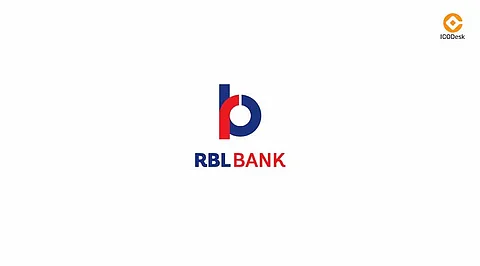

RBL Bank share price has faced significant volatility, reaching ₹161 as of the latest trading session with a drop of 0.62%. A detailed look at the charts, financial ratios, and quarterly performance provides a clear picture of the stock's current position and outlook.
The weekly chart of RBL Bank shows a downtrend, with the stock trading well below key moving averages, including the 50-week and 200-week moving averages. The current price is around ₹161, which is close to the 52-week low of ₹158. The moving averages display bearish alignment, with shorter-term averages consistently below longer-term averages. This configuration typically indicates sustained selling pressure and a lack of strong buying interest.
Volume data further confirms the downtrend. Recent weeks have shown higher-than-average selling volume, suggesting that sellers are in control. The Relative Strength Index (RSI) remains in the lower range, indicating oversold conditions, but this alone does not confirm a reversal.
In the intraday 30-minute chart, the stock shows consolidation near its recent lows. Bollinger Bands indicate tight range-bound movement, with the price hovering around the lower band. This suggests a lack of buying momentum and a struggle to reclaim higher levels. The volume profile in the shorter timeframe also highlights reduced interest from buyers.
Resistance is visible near ₹162.20, the 20-period moving average on the 30-minute chart. Breaking above this level with significant volume could signal a short-term recovery. However, without such movement, the stock remains vulnerable to further declines.
Market Capitalization: ₹9,805 crore
Stock P/E: 8.37
Book Value: ₹245
Dividend Yield: 0.93%
Return on Capital Employed (ROCE): 6.23%
Return on Equity (ROE): 8.23%
Face Value: ₹10.00
RBL Bank trades at a significant discount to its book value, with a P/B ratio of 0.67. This could make the stock appear undervalued. However, low ROE and ROCE figures highlight underlying profitability concerns. The stock's P/E of 8.37 is relatively low, reflecting the market's cautious stance toward RBL Bank's growth prospects and risk profile.
Low Price-to-Book Ratio: Trading at 0.67 times its book value, RBL Bank's stock appears attractively priced for value investors.
Improving Asset Quality: Gross NPA (Non-Performing Asset) ratio has reduced from 5.4% in 2021 to 2.88% in the latest quarter, showing improvement in asset quality and credit risk management.
Low Interest Coverage: The bank has a low interest coverage ratio, which implies limited cushion against interest expenses, especially in a high-interest rate environment.
High Contingent Liabilities: Contingent liabilities of ₹97,211 crore represent a significant risk, as any negative outcome related to these liabilities could strain the bank's financial health.
Weak Return on Equity: Over the past three years, ROE has averaged just 4.95%, signaling poor returns relative to shareholder investments.
Dependence on Other Income: RBL Bank's earnings heavily rely on other income, which contributed ₹3,386 crore in the latest period. Such reliance can create revenue stability concerns.
RBL Bank has shown steady revenue growth in recent quarters. The revenue in Q2FY25 stood at ₹3,531 crore, marking a year-over-year increase. However, interest expenses also increased significantly, reaching ₹1,916 crore. This rise in interest expenses has impacted financing profits, which turned negative at ₹-636 crore for the quarter, translating to a financing margin of -18%.
The bank's other income stood at ₹927 crore in Q2FY25, helping to offset weak core banking profits. However, the high reliance on non-core income signals potential sustainability issues. Net profit for the quarter was ₹223 crore, with an EPS of ₹3.66. Although the net profit remained positive, the margin pressures indicate structural challenges.
Asset quality has been a focal point for RBL Bank. The Gross NPA ratio has improved, decreasing from 5.4% in September 2021 to 2.88% in September 2024. Net NPA also showed improvement, falling to 0.79%. These improvements suggest better credit risk management and a focus on strengthening the loan book.
Current Valuation: RBL Bank's low P/E ratio and discount to book value may attract value-oriented investors. However, the low valuation reflects the market's skepticism about the bank's growth and profitability prospects.
Profitability Concerns: Despite revenue growth, the bank's financing margin remains in negative territory, highlighting ongoing profitability challenges. Rising interest costs and low core banking profitability could limit future earnings growth.
High-Risk Profile: The large contingent liabilities and weak interest coverage ratio underscore a high-risk profile, which could be a red flag for conservative investors.
Potential for Recovery: If RBL Bank manages to control interest costs, improve asset quality further, and reduce reliance on non-core income, it could gradually strengthen its financial health. However, the recovery may be slow and subject to favorable macroeconomic conditions.
The technical indicators suggest continued bearish sentiment. The stock's current level at ₹161 is close to a critical support zone around ₹158, the recent 52-week low. Failure to hold above this level could lead to further declines, with the next support around ₹150.
In the short term, a breakout above ₹162.20 (20-period moving average on the 30-minute chart) could signal a minor recovery, potentially testing levels near ₹165. However, this would require substantial buying interest and improved sentiment toward the stock.
RBL Bank presents a mixed picture for investors. While the stock is trading at a low valuation, reflecting potential value, the underlying profitability and high-risk profile raise concerns. The recent decline in asset quality risks and the stock's substantial discount to book value might appeal to some value investors. However, the bank's dependence on non-core income and low core profitability are notable red flags.
For long-term investors, the stock could be worth considering only if the bank shows consistent improvement in core profitability and reduces its exposure to contingent liabilities. Short-term investors and traders should approach with caution, as the technical outlook remains bearish.
In summary:
Long-term investors: May consider a cautious approach, monitoring future earnings and margin improvement.
Short-term traders: Should watch for breakout levels and observe volume signals closely to determine potential reversal points.
Overall, RBL Bank's stock requires careful evaluation, considering both its valuation advantages and the risks associated with its current financial and technical indicators.